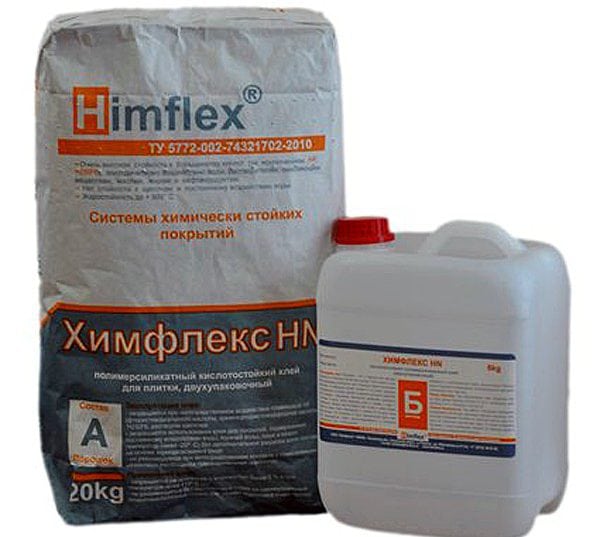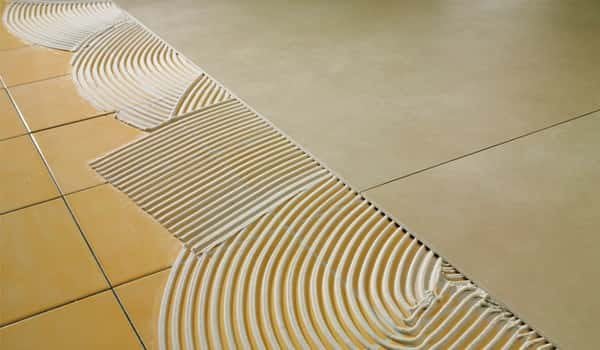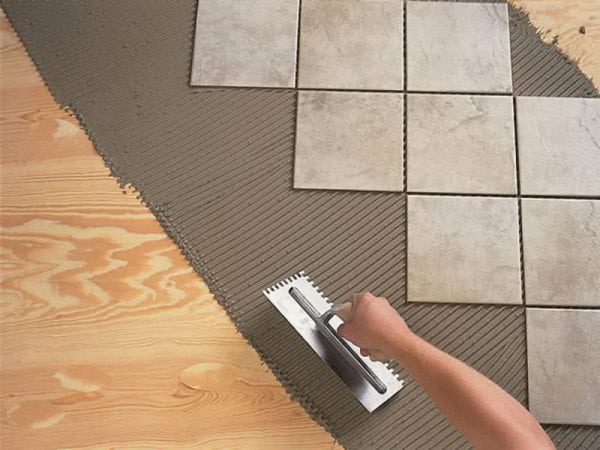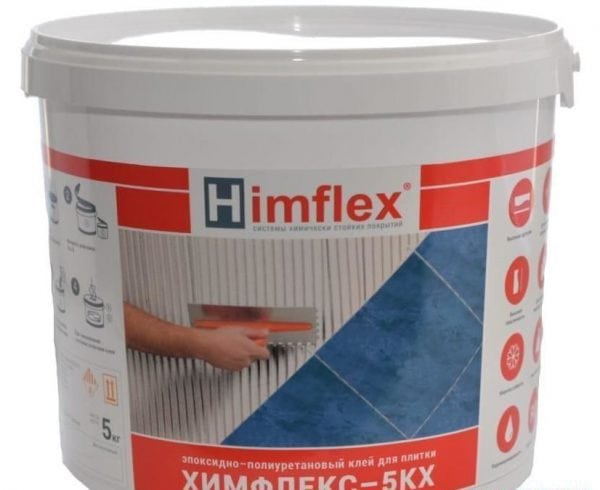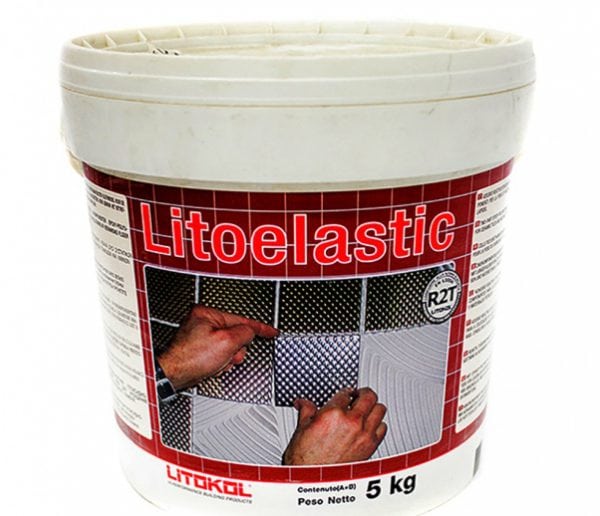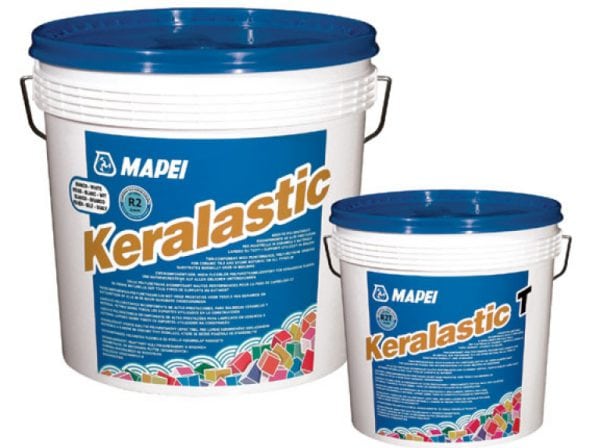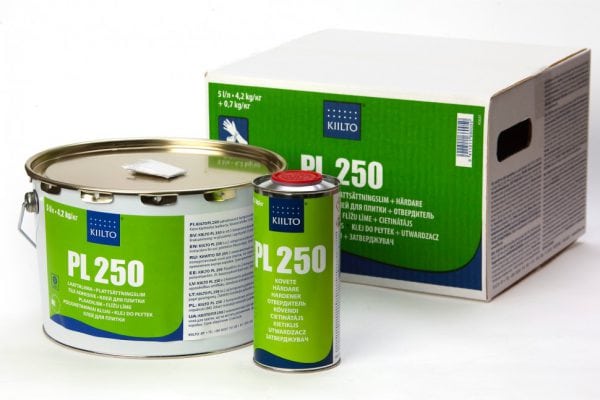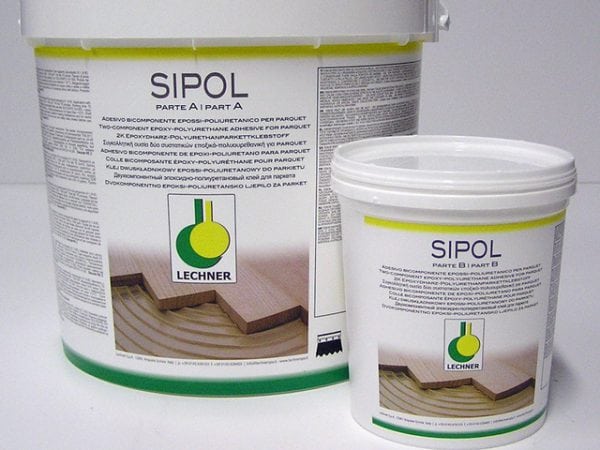Two-component adhesive for tiles is one of the most durable, reliable compositions that are used by real professionals. A feature of this type of product is the need to mix two different components, after which they will be ready for use. Manufacturers produce a variety of means for tiles, it is worth considering their properties in more detail.
- Two-component adhesive - description
- Properties and characteristics
- Polyurethane Composition
- Epoxy adhesive
- Epoxy Polyurethane Adhesive
- Pros and cons of two-component formulations
- Adhesive Manufacturers
- LITOELASTIC
- Litokol
- Mapei
- Ceresit
- Kiilto
- Laying tiles on two-component adhesive
- Errors during operation
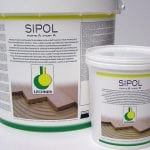
Two-component adhesive - description
Tile two-component adhesive is a high-strength composition, which is represented by hardener and polyester or epoxy resin. Also, binders of synthetic origin that improve the properties of the adhesive joint are necessarily introduced into the mixture. These include plasticizers, modifiers, minerals that optimize the plasticity of the mass.
After the two components are combined, the polycondensation reaction begins, as a result of which the solution hardens. Until this moment, they can glue tiles, ceramics, artificial and natural stone, boards, mosaics. Most adhesives are also suitable for other floor coverings - laminate, linoleum, parquet.
The composition is used for exterior and interior use. Equally popular is a waterproofing agent in rooms with high humidity. Most brands are suitable not only for tiling, but also for work on deformable and vibrating substrates. Other surface materials with which two-component adhesives have good adhesion:
- concrete, brick, aerated concrete;
- cement screeds;
- plasters;
- drywall, gypsum fiber, plaster;
- metal;
- OSB, plywood, chipboard;
- old tiled wall coverings.
Properties and characteristics
Adhesive formulations comprising two components may vary depending on the substrate. Glue can be like this:
- polyurethane;
- epoxy;
- epoxy-polyurethane.
The most flexible are polyurethane compounds - they are able to maintain "rubber" properties in any conditions, do not crack and crumble. Epoxy compounds should be used where increased moisture resistance, resistance to chemicals. Epoxy-polyurethane adhesives are the most effective, have increased strength.
to contents ↑Polyurethane Composition
This material is the most popular for laying tiles in dry and wet rooms, suitable for facing interiors and facades. The composition includes fillers for increasing viscosity - surfactants, polyester resins, as well as composite materials, hydroxyl-containing compounds, oligoesters, isocyanates. The main active ingredient is polyurethane, which is formed by combining other components.Aminoamides are additionally introduced into the composition of waterproof adhesives.
Two-component polyurethane adhesive is characterized by the following properties:
- excellent adhesion to various surfaces;
- lack of shrinkage;
- thixotropy - the ability to recover;
- heat resistance;
- high strength of the seam;
- frost resistance;
- water resistance;
- lack of sliding from vertical surfaces.
The composition can be used to adhere porous products, to process highly absorbent surfaces. The polyurethane material is ideal for ceramic tiles, they can work on wooden substrates. Polyurethane adhesive is also suitable for underfloor heating, for example, when sticking tiles in the kitchen.
to contents ↑Epoxy adhesive
Epoxy adhesive is a reactive composition for gluing tiles. Distinctive properties are acid resistance and resistance to alkalis and other chemical components. Epoxy is heavy-duty, waterproof, frost-resistant, does not shrink, does not collapse over time.
to contents ↑The cost of laying tiles using epoxy is quite high, because such materials are expensive. Therefore, it is not practical to use them at home, but at the airports, on ships, in elevators, workshops and in production, glue is in great demand. With it, you can fix the tile on plywood, particleboard, metal, concrete, brick and other materials.
Epoxy Polyurethane Adhesive
These products combine polyurethane and epoxy in the composition, therefore, include all the properties of such compounds. Adhesives are highly elastic, high strength, and are resistant to moisture, temperature extremes and other atmospheric factors.
to contents ↑Pros and cons of two-component formulations
The high efficiency of two-component adhesives is not in doubt. The advantages include:
- ability to glue all known materials;
- maximum tensile strength;
- the ability to use in any room, regardless of environmental conditions;
- long service life.
The disadvantages include the high cost, although this is more true for epoxy compounds. Most adhesives require strict adherence to the instructions for mixing the components - otherwise the properties change for the worse.
to contents ↑Also, the disadvantages include the difficulty of removing glue from the tile, other materials after complete curing, although this is not surprising for a material of such strength.
Adhesive Manufacturers
A variety of two-component adhesives are sold in construction stores, and the variation in prices is significant. The most popular formulations are described below.
LITOELASTIC
Glue Litoelastic refers to epoxy-polyurethane compositions, is a two-component reactive tile material. It provides the most reliable adhesion with the base, so it is most famous among builders and finishers. Using glue, they attach the tile to all possible types of substrates. It is also ideal for waterproofing in humid buildings. Litoelastic does not shrink after final hardening.
The specifics of the use of glue is as follows:
- lime and cement should not be added to the product;
- temperature for application should be within + 10 ... + 35 degrees;
- the mixing ratio is 4.6 parts of component A, 0.4 parts of component B, another proportion will spoil the glue;
- stains must be removed immediately before solidification with denatured alcohol.
Litokol
Glue "Litokol" based on polyurethane and polyester resins additionally contains mineral bases (cement), a number of chemical additives. It is widely used for stickers on bricks, blocks, plaster, underfloor heating systems. The adhesive quickly hardens after contact with air; it is resistant to mechanical stress and temperature changes. The tool can be used to sticker any type of tile and tile, mosaic.
Mapei
The composition of Mapei Keralastic is a white polyurethane adhesive that allows you to glue tiles in a professional manner. The composition of the two-component emulsion contains synthetic fillers, isocyanate hardener.
Mapei Keralastic is suitable for application on plaster, asphalt, concrete, wood, metal, gypsum, asbestos concrete. A distinctive feature of the glue is its fast curing - it is possible to operate the tile glued to the floor after 12 hours. The material can reliably fix heavy large format tiles even on the walls, it has a very high resistance to slipping.
to contents ↑Ceresit
Ceresite is one of the most famous companies that produces building mixtures. Adhesives with a two-component composition are frost and moisture resistant. The products contain polymeric and mineral compounds that give them maximum durability. An example of tile adhesive can be called Ceresit CU-22 - it is applied even to deformed substrates, work with it at a humidity of more than 70%.
Kiilto
Kiilto PL 250 polyurethane-based Russian adhesive is solvent-free and environmentally friendly. It is used for gluing all types of tiles, including those with an unusual composition. You can use a tool for fixing PVC, extruded polystyrene, insulation. Glue forms a strong, elastic seam. You can work with it even at low temperatures - from + 5 ... + 10 degrees.
to contents ↑Laying tiles on two-component adhesive
Before using the product, you need to properly prepare the base. It must be dry, mechanically strong, not crumbling. Oil stains, paints, dirt are completely removed from the base. After pouring the concrete screed, the base should be kept for at least a week for every centimeter of layer thickness. It is important to remove rust from metal surfaces, which is done manually or by sandblasting machines. Porous substrates must first be primed.
Two-component glue is bred strictly as specified in the instructions. A pasty or dry composition is combined with a liquid component. It is important to use high-precision scales, for example, kitchen. It is forbidden to add water to the glue! Mixing is carried out with a stick, but it is better to do this with a construction mixer for 3 minutes. Usually, it takes 20-40 minutes to work with the finished composition, depending on the brand.
Apply the tool with a notched trowel with a layer of 2 mm, after the tile is pressed to the base. Be sure to leave dividing and expansion joints. They should be 5 mm along the walls. Roll the coating with a roller to remove the remaining air. After 3 hours, grouting can be done, although for some compounds it is recommended to wait a pause of 24 hours.
to contents ↑
Errors during operation
Do not work at too high or low temperatures - this may reduce grip. It is also important to apply glue only on dry surfaces - if they are wet, the life of the masonry will be reduced. The mistake is to measure the components “by eye”, which leads to a violation of technology and a drop in the quality of the adhesive composition.

